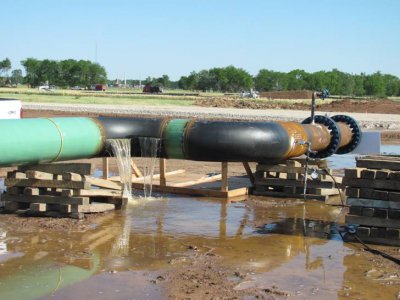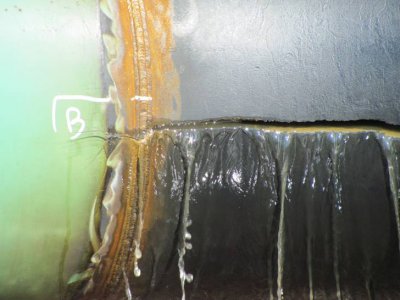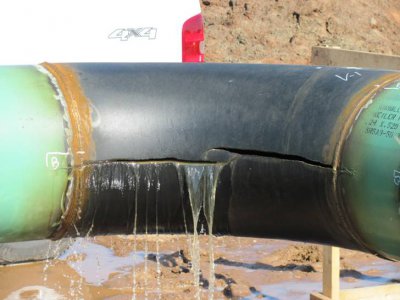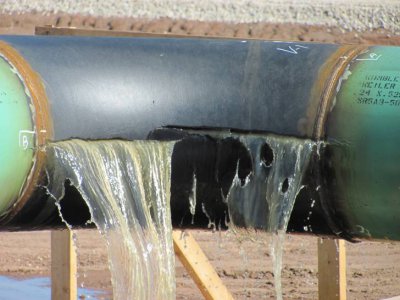Actually, NX, there is very little danger of a catastrophic rupture using this method. Since the vessel is full of water, as far as possible, the volume of air is less than 3 cubic inches by my estimates. Even if seam split, the pressure of that small volume would drop so fast that not much would be ejected, and that would have a very steep pressure drop off. That's the entire reason for using water for this test. It would, however, make a mess! NEVER use just air for this. Besides, the additional compression from the cylinder would have very little effect on the air pressure of the 120 gallon volume of the tank. In other words, you could not raise the vessel pressure much at all above where the shop air had it.
I have used this method in design verification many times with new products in the fluid filtration business, sometimes deliberately to the point of failure. 'O' rings can fail due to poor design of the seal surface, or incorrect materials selection, or a dozen other causes. Materials can be stretched until retaining rings let go. I have tested vessels up to 3000 PSI, and had several fail, but contrary to instinct, it's not very spectacular. All you usually get is a little "tink" when something moves enough to relieve the pressure. Kind of disappointed me the first time. The key is to eliminate any airspace in the system. Of course, this requires eliminating a source of additional pressure being fed into the tank. Once I had pressured the tank up to shop air pressure, it was valved off. I have even pulled a vacuum on some vessels to ensure that there is no voids. Since water is virtually incompressible, if there is any failure, the pressure falls off so sharply that there is little energy to eject either the water, or any component that may fail with much energy.
Of course, reasonable caution must be observed around any pressurized container, regardless of what it is filled with, but hydrostatic pressure testing has been a standard method for a long time and is considered to be safe.




